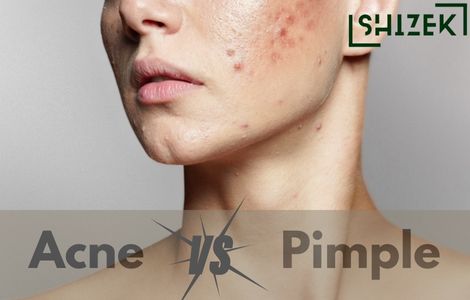Aquatic Food Chain

Aquatic ecosystems are home to a diverse range of plant and animal species, all of which are interconnected through a complex web of relationships. At the heart of this ecosystem lies the aquatic food chain, which plays a crucial role in maintaining the delicate balance of life in these environments.s.
In this article, we will discuss the aquatic food chain, how energy moves in it, human impact on it, and more.
Let’s get started!
What is the Aquatic Food Chain?
The aquatic food chain is a hierarchical system that starts with primary producers, which are typically aquatic plants and algae that use photosynthesis to produce organic matter. This organic matter is then consumed by primary consumers, such as small fish, zooplankton, and crustaceans, which in turn become food for larger predators.
In simple terms, the aquatic food chain is like a giant dinner table in the and water where every living thing has a role to play. It starts with tiny plants and algae (primary producers) that make food using sunlight. These are eaten by small animals like zooplankton (primary consumers), which are then gobbled up by bigger fish (secondary consumers), and so on.
How does the Aquatic Food Chain Work?
The Aquatic food chain comprises three main elements: Producers, Consumers and Decomposers.
Producers
Food chains always start with producers. Producers are organisms that can make their own food from sunlight through a process called photosynthesis. In aquatic habitats, the main producers are tiny floating plants called algae.
There are different types of algae:
- Phytoplankton are microscopic algae that drift in the top layers of water. They are so small you need a microscope to see them properly.
- Seaweed is larger algae that you can see with your naked eye. It grows attached to rocks or the bottom of the sea floor.
Consumers
Consumers are living things that cannot make their own food, so they must eat something else to get energy and nutrients. There are a few types:
- Primary consumers are the first consumers after the producers. They eat algae or water plants. Examples are small shrimp-like creatures called krill, and very small fish.
- Secondary consumers eat the primary consumers. These are usually medium-sized fish that eat smaller fish and krill. A common example is the tuna fish.
- Tertiary consumers eat other consumers. They are the top predators in the food chain. Big examples are sharks, seals, and killer whales that hunt and eat large fish.
Decomposers
When plants and animals die in the water, their bodies get broken down by decomposers like bacteria and fungi. This releases nutrients that are reused by the algae and plants, continuing the food chain cycle.
Aquatic Food Chain Example
Here is an example of how the energy flows through an arctic food chain:
Phytoplankton → Krill → Silver fish → Leopard Fish → Orca (or Killer Whale)

Phytoplankton gets energy from the sun through photosynthesis. Tiny krill eat phytoplankton to get energy. Silverfish eat the krill, leopard fish eat the krill, and orcas eat the leopard fish.
Human Impact on Food Chain
| Major Impacts | Overfishing, habitat loss, introduction of invasive species, ocean pollution, ocean acidification, and ocean warming. |
| Ocean Warming Impacts | For the past 50 years, more than 90% of global warming from human activities has been absorbed by the ocean. |
| Consequences of Ocean Acidification | Leads to coral bleaching and affects coral growth by lowering rates of calcification. |
| Plastic Pollution threat | Marine plastic pollution poses a significant threat to marine life. |
| Shifts in Marine Species | Since 1950, many marine species have changed geographical range and seasonal activities due to ocean warming and habitat changes. |
| Ocean Wilderness | Only 13% of the ocean area remains as wilderness, mostly in open ocean areas. |
FAQs
- What is an aquatic food chain?
The aquatic food chain is a system of organisms in water where each organism depends on the one below it for food. - How does energy flow in an aquatic food chain?
Energy flows from producers like phytoplankton to consumers like zooplankton, small fish, and up to top predators. - What are primary producers in an aquatic food chain?
Primary producers, like phytoplankton and algae, are the first level in the aquatic food chain that convert sunlight into energy. - Give an example of a simple aquatic food chain.
An example is Phytoplankton → Zooplankton → Small Fish → Big Fish → Top Predator. - Why is the aquatic food chain important?
The aquatic food chain maintains the balance of aquatic ecosystems and ensures the survival of various species. - How do human activities impact the aquatic food chain?
Overfishing, pollution, and habitat destruction disrupt the aquatic food chain, leading to imbalances and threats to aquatic life. - What role do decomposers play in the aquatic food chain?
Decomposers break down dead organisms and organic matter, recycling nutrients back into the ecosystem. - What is the significance of trophic levels in the aquatic food chain?
Trophic levels categorize organisms based on their position in the food chain, showing the flow of energy from producers to consumers. - How do aquatic food chains differ from terrestrial food chains?
Aquatic food chains often have inverted biomass pyramids, with consumer biomass exceeding that of primary producers. - What are some examples of aquatic food chains?
Examples include Phytoplankton → Copepod → Fish → Squid → Seal → Orca → Brittle Star and Algae → Catfish → Osprey.























































































































